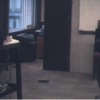Free Online Productivity Tools
i2Speak
i2Symbol
i2OCR
iTex2Img
iWeb2Print
iWeb2Shot
i2Type
iPdf2Split
iPdf2Merge
i2Bopomofo
i2Arabic
i2Style
i2Image
i2PDF
iLatex2Rtf
Sci2ools
CVPR
2007
IEEE
2007
IEEE
Statistics of Infrared Images
The proliferation of low-cost infrared cameras gives us a new angle for attacking many unsolved vision problems by leveraging a larger range of the electromagnetic spectrum. A first step to utilizing these images is to explore the statistics of infrared images and compare them to the corresponding statistics in the visible spectrum. In this paper, we analyze the power spectra as well as the marginal and joint wavelet coefficient distributions of datasets of indoor and outdoor images. We note that infrared images have noticeably less texture indoors where temperatures are more homogenous. The joint wavelet statistics also show strong correlation between object boundaries in IR and visible images, leading to high potential for vision applications using a combined statistical model.
Computer Vision | CVPR 2007 | Infrared Images | Joint Wavelet Statistics | Low-cost Infrared Cameras | Visible Images | Wavelet Coefficient Distributions |
| Added | 12 Oct 2009 |
| Updated | 28 Oct 2009 |
| Type | Conference |
| Year | 2007 |
| Where | CVPR |
| Authors | Nigel J. W. Morris, Shai Avidan, Wojciech Matusik, Hanspeter Pfister |
Comments (0)

